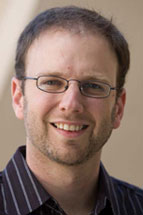From the editor: Accelerators, where basic and applied sciences meet
 |
| Photo: Reidar Hahn, Fermilab |
Science is often divided into two parts: the basic, knowledge-for-its-own-sake part and the applied, turn-it-into-products part. This is a division convenient for structuring organizations and funding processes, but doesnt reflect the real world.
Accelerator physics straddles both the pure and applied and provides a conduit for ideas to flow in both directions. Advances in basic physics research allow the development of new types of accelerators with many applications. At the same time, those who use accelerators, whether in medicine, industry, or some other area, realize that they could do something new and interesting if only accelerators could be improved in some specific way, providing guidance to accelerator designers. This flow of invention and need goes back and forth, making accelerator development a dynamic field.
At this time, there is an increasing recognition of the importance of accelerators in many areas of science, medicine, industry, and technology. With the number of operating accelerators estimated at 17,000, it seems reasonable to assume that hundreds of thousands of people employ them in their day-to-day work in some way, and that tens to hundreds of millions benefit from their application.
We recently started a new series of articles in symmetry about accelerator applications. As we dig deeper, we are continually surprised at the new applications that turn up. For example, in this issue we highlight the use of accelerators in making shrink wrap. Electron beams make the plastic tougher and better for storing food and protecting other products.
Consumer products are just one application of accelerators. Others will be explored at an upcoming event in Washington, DC. The Symposium on Accelerators for Americas Future will examine how to fulfill future needs in national security, medicine, energy and the environment, industrial processing, and basic research.
Although the development of accelerators in the United States grew from the high-energy physics program and is still strongly supported by that program, the field is now heavily intertwined with a wide range of endeavors. The flow of ideas and innovation is a great example of how basic and applied research and development work together in a complicated and interesting symbiosis, which ultimately provides more benefits to society than any of us first appreciate.
David Harris, Editor-in-chief
Click here to download the pdf version of this article.


